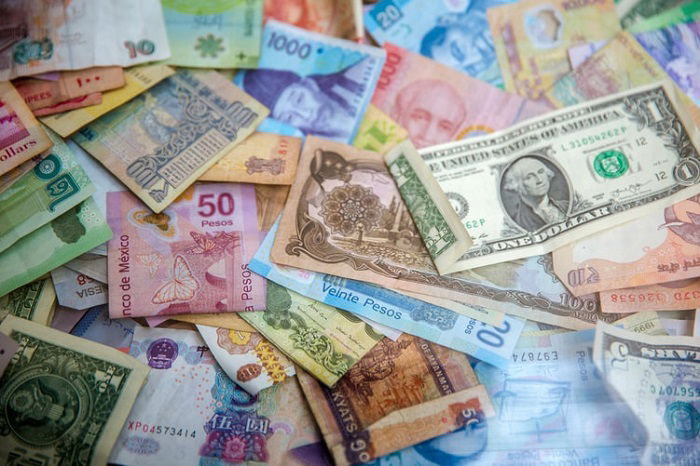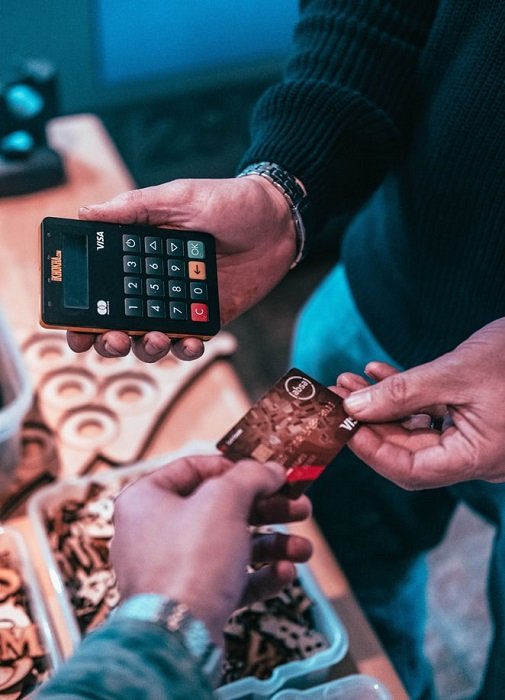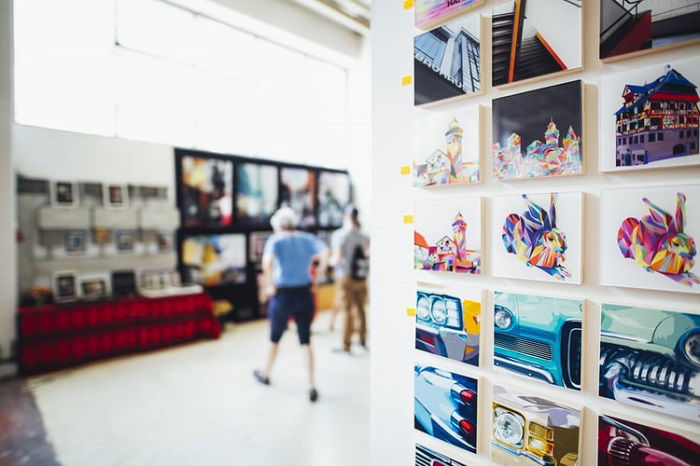NFTs have been called a digital revolution for selling and buying art. What is an NFT? And how do they work? Are they of interest to photographers? What are the positive and negative elements? Let’s explore what NFTs are all about.
What Are NFT Images?
NFT stands for “non-fungible token.” That’s the basic answer. But we don’t think that spelling out the acronym makes it any easier to understand! Non-fungible means it can’t be altered or replaced. A unit of bitcoin is fungible. Bitcoin can be traded and exchanged for different bitcoins. You can trade one for another, and there’s no tangible difference. In comparison, an NFT is unique and unchangeable. NFT images are an image in the form of a digital token. These tokens are then sold online. An NFT can be anything in digital form. For example, artwork, photographs, and animations can be converted into an NFT and sold online. The NFT is shaking up the art world. Some individual NFTs are being sold for thousands of dollars. And artists might be tempted to think NFTs will provide them with the financial rewards they deserve. But is it so simple?
How Do You Buy and Sell NFTs?
Selling NFTs isn’t like selling your artwork on Etsy or at an art fair. This marketplace is completely different. And completely digital.
NFTs and Cryptocurrencies
NFTs aren’t bought and sold with Great British Pounds or US Dollars. You can put your Euros away too. An NFT can only be purchased with cryptocurrency. The majority of the current NFTs are part of the Ethereum blockchain, which is one type of cryptocurrency. You won’t receive pounds or pence if you create an NFT and sell it on the Ethereum blockchain. You’ll be paid in ETH. A blockchain is the community of investors and traders related to that particular cryptocurrency. Every user has their profile on the blockchain, which contains their purchase history.
Why Buy an NFT?
Many people buy NFTs for the same reason anyone buys a piece of art. It’s because they love the work or want to support the artists. But when you’re dealing with financiers and traders, things aren’t so simple. Many NFTs are purchased as an investment. The buyer believes that the NFT they buy will appreciate over time. They can then sell the NFT for a profit further down the line.
How to Buy an NFT
Whether you’re buying an NFT because you appreciate the work or because you appreciate the price, you need to have the right crypto. If you’re a member of the Ethereum blockchain, you can only buy NFTs available there. Ethereum is the leading crypto blockchain involved with NFTs. But other blockchains are getting involved. For example, Bitski is another blockchain dealing in NFTs. But their catalog is currently a lot smaller. There are some new NFT market platforms, such as OpenSea and KnownOrigin. And they allow some users to buy and sell using a credit card. This can be a bonus if you’re not an expert on the crypto market.
Why Sell an NFT?
Many artists and content creators are using Instagram to promote their work. But unless you’re one of the top influencers, it generates no revenue. For example, a photographer could get thousands of likes for one photograph, but likes don’t pay the bills. NFTs are giving digital art creators a new way of selling their work. They can sell individual images directly as NFTs. So they don’t need to rely on fairs and exhibitions. And they don’t need to be scouted for editorials. Instead, they can sell their work as individual units directly into the blockchain. There have been some staggering figures linked to the sale of NFTs. Twitter founder, Jack Dorsey, sold his first-ever tweet for over $2 million. Pop artist Grimes sold a 50-second video as an NFT for $390,000. And there was a $6.6 million sale for a video by Beeple. When you see numbers like that, it’s hardly surprising artists and photographers are looking to NFTs to make some money. Others say it sounds too good to be true.
How to Sell an NFT
To sell an NFT, you have to make it available on one particular blockchain. It’s similar to selling a piece on Etsy or eBay. But only members of the blockchain can view or purchase the digital token. In most cases, you’ll be paid in the cryptocurrency associated with that blockchain. Some market platforms do allow some transactions with more traditional currencies. But their NFT collections are limited. Ethereum is the biggest NFT marketplace. So if you sell with them, you’ll have the largest selection of potential buyers. This is a positive, but artists should know that it costs $85 to list an NFT on their platform. Other platforms have cheaper rates. But none are free to use.
How to Price Your NFTs
The cost of listing an NFT is a serious consideration for small-scale creators. You need to know if your work is going to sell before you put it online. If you upload a few NFTs and they don’t sell, you’ll be looking at a heavy financial loss. It also makes pricing very important. As a seller, you can’t price your work too low, or you’ll make a loss. But you also have to be careful not to price your work too high. You can set your token at a fixed price or sell it to the highest bidder. If you opt for the latter option, you will need to set a minimum bid. Setting a minimum bid will stop your work from selling below its value.
What Do NFTs Mean for Photographers?
Photographers, like other artists, can turn their photos into NFTs and sell them online. You don’t need to do any new shoots. Instead, you can go through your archive to find an old photo you think has value. NFTs can be a good way to supplement a photographer’s income. They can sell photos they did for fun. Even images that may have had no professional value previously. As long as it’s digital, you can turn it into an NFT. Some photographers have struck gold by selling their images as NFTs. For example, Kate Woodman sold her work Always Coca Cola for 11,888 ETH. That works out at over $20,000. That’s a lot of money for one photograph. The considerations for a photographer are the same as any other artist. First, you have to be confident your work will sell. Listing an NFT isn’t free, so you don’t want to make a complete loss. You also need to consider what type of work might sell. Photos won’t sell just because they are an NFT. The work needs to be coveted for one reason or another.
NFT Ownership and Copyright
When an NFT is sold, the buyer becomes the owner of the artwork. As a creator, you might be worried that someone will buy your work and pass it off as their own. But, thanks to the way blockchains work, the creator keeps the copyright and reproductions rights. Blockchains keep the information for all NFTs sold. So you can see who owns the NFT and its complete history. And, as the creator still has the rights to the image, they can still publish it on their own social media. And they can even exhibit it in public spaces. This system is good for the photographer. But it raises the question as to why someone would buy an NFT in the first place. They own the original NFT, but the creator can still use the image or video for other purposes. Also, images and videos purchased as NFTs can be viewed for free. Anyone on YouTube can now view the Grimes video that sold for $390,000. And images are even more vulnerable. You could right-click and save-image-as a photograph from a web page, even if it is an NFT. You couldn’t use it for any commercial purposes, but you could enjoy it privately. But this is a risk whenever photographers and artists upload their work to online platforms. Their work is at risk of being stolen. Some websites do take measures to prevent this. But for anyone using a computer mouse, it’s easy to download online content.
Conclusion
This NFT business may sound complicated. And to be honest—it is. The world of cryptocurrencies is complex and difficult to navigate. And most NFT creators are members of the art world and not day traders. Cryptocurrencies are booming. It might seem like a great place to invest. But the foundations are unstable. It could be another capitalist bubble that’s about to burst. If you’re unsure, then it’s best to stay clear. At the very least, do your research first. NFT images are taking the art world by storm. But it’s far from some a get-rich-quick solution for photographers and creatives. There are the listing fees and risks of underselling or not selling at all. There are cheaper platforms, but they have fewer users. We hope this article has given you more insight into the world of NFTs. But it’s up to you to decide whether to join the NFT marketplace or observe it at a distance! If you want to learn other ways to use your social media to boost your business, check out our Social Success Strategies eBook!










